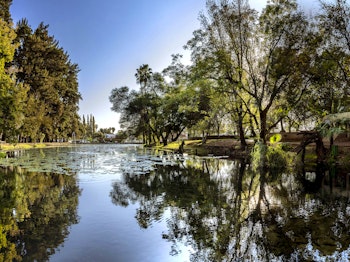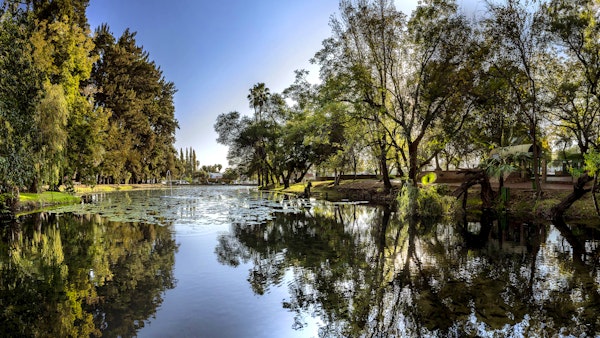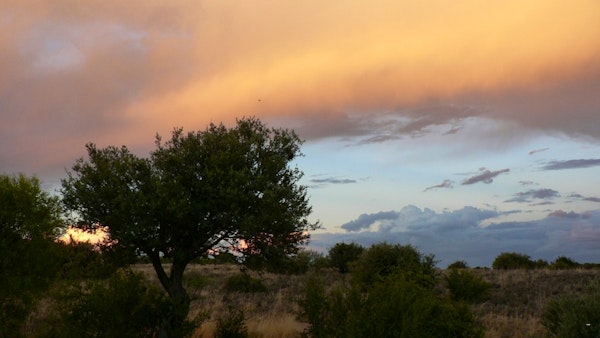Kuruman
Description
Kuruman is situated on the border between the Northern Cape and the North West provinces. This surprisingly green desert town is called the Oasis of the Kalahari, due to a spring that spurts millions of litres of water from deep underground. Situated on the main route between Gauteng and Namibia or Cape Town, Kuruman is a great base with plenty to keep you busy.
Kuruman is full of unspoilt vegetation despite its semi-desert surrounds. It’s known for its permanent supply of water from The Eye, a natural spring that delivers 20 million litres of water daily. Legend has it that those who drink from the spring may never want to leave Kuruman.
Founded as a London mission station by Robert Moffat in 1821, Kuruman is full of history. The cross-shaped Moffat Mission Church was built in 1838 with a roof of reeds, a floor of pressed dung, and stones bound together with mud. It’s considered to be the Mother Church of the Tswana people. In 175 years, services have only been suspended once - in the 1960s when the Tswana people were relocated at the height of Apartheid.
Kuruman is a progressive mining town with minerals such as manganese ore, iron ore, tiger’s eye, and the world’s richest deposits of crocidolite, more commonly known as blue asbestos. You can enjoy mining excursions, such as the Sishen Iron Ore Mine outside Kathu.
Play a round of golf at Kuruman Country Club or Sishen Golf Club in Kathu and visit the nearby Kalahari Meerkat Project. The Wonderwerk Cave is among the oldest inhabited caves on earth with 1500 year old finger paintings and 2 million year old stone tools excavated in 2008. The cave is so large it’s believed an ox wagon could be turned in its entrance.
Don’t forget to visit Truce Tree, a camel thorn tree on Seodin Road that dates back to the rebellion of 1914, when 1200 rebels invaded Kuruman to steal supplies. A treaty was signed here to guarantee the safety of government forces in exchange for free passage through the town.
Nature lovers will be in their element in Kuruman. At 100,000 hectares, Tswalu Kalahari Reserve is the largest privately owned game reserve in South Africa. It is home to 230 bird species and 70 mammal species, including black rhino, lion, cheetah, and roan antelope. The Bird Sanctuary and Nature Reserve is a wetland area home to 115 different species of birds mainly from the duck and ibis families, as well as antelope, giraffe, zebra, black-backed jackal, and caracal. The Billy Duvenhage Nature Reserve is home to several game and bird species, while the renowned Kgalagadi Transfrontier Park covers 3.6 million hectares of desert.
The Kalahari is home to 40 of the 67 raptor and vulture species and 7 of the 12 owl species found in South Africa. Bird lovers will enjoy the Raptor Route beginning at the Kuruman Raptor Rehabilitation Centre. Keep an eye out for the African Fish and Martial eagle, Lappetfaced vulture, Red-necked falcon, and Secretary bird.
Kuruman is a diverse and beautiful green oasis in the stark Kalahari. It’s well worth spending a few days exploring the natural and historical attractions.





